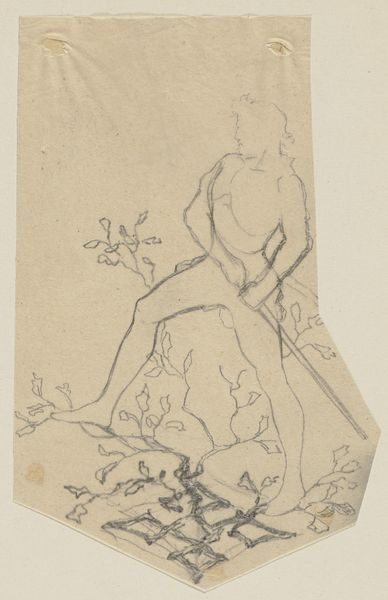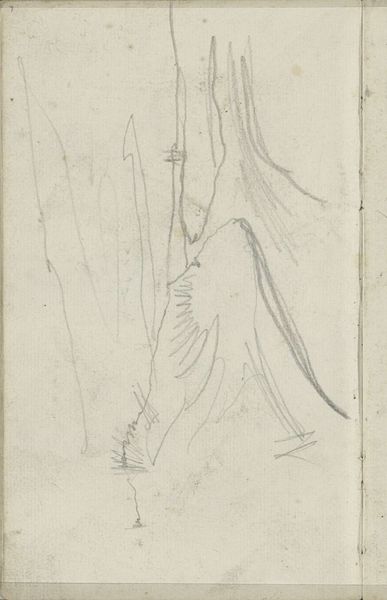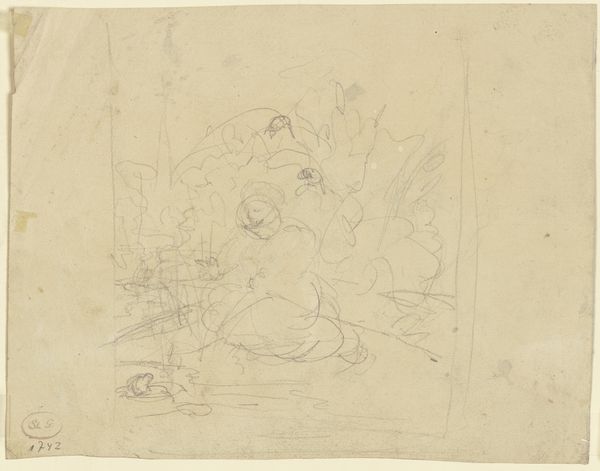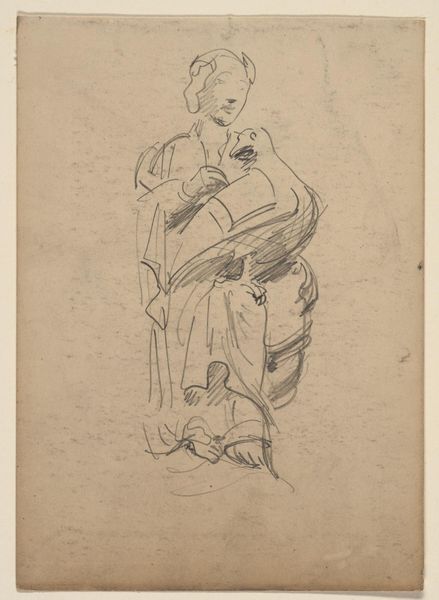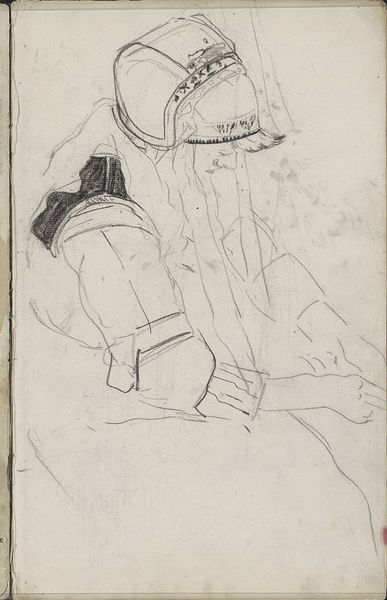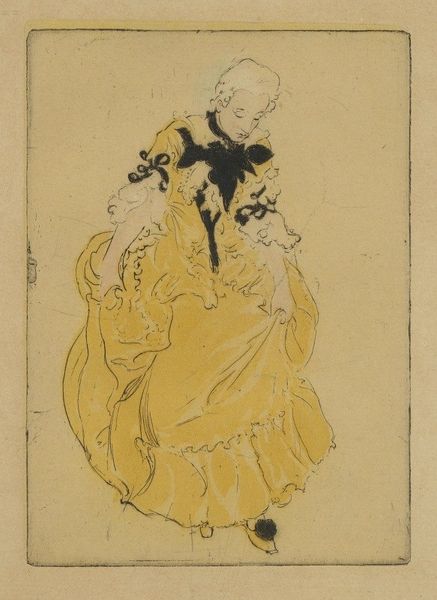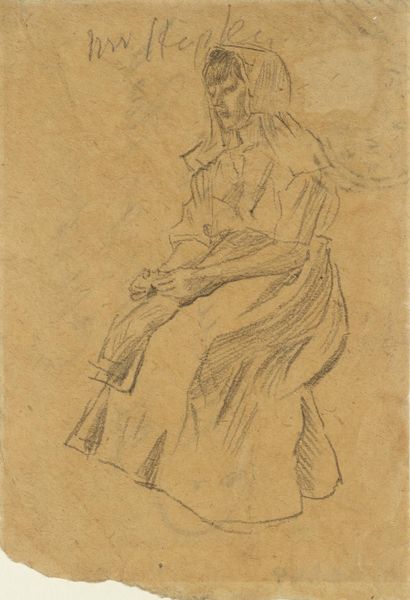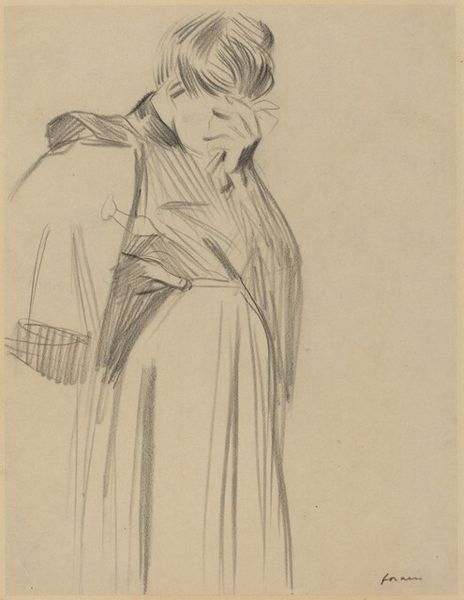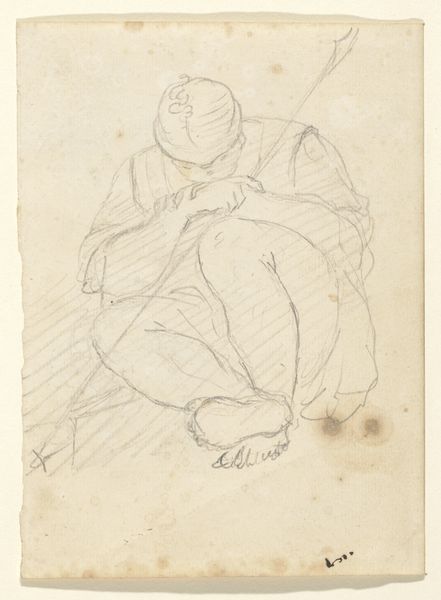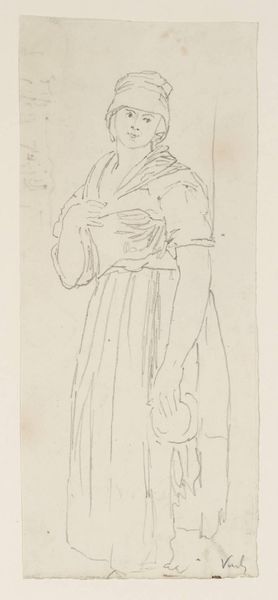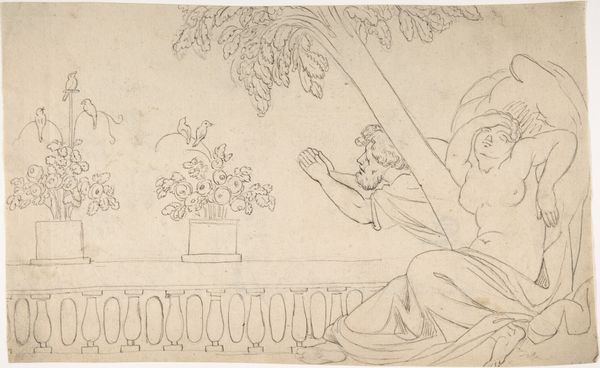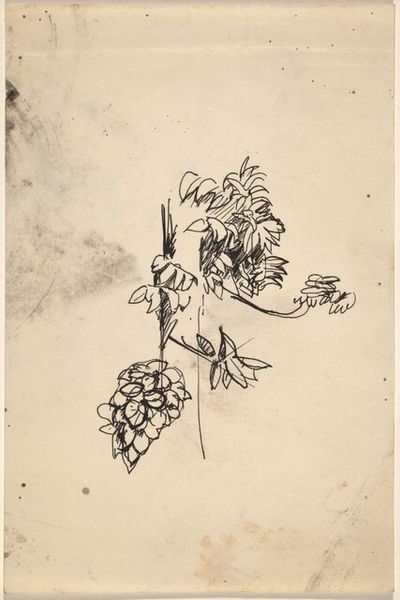
drawing, print, ink
#
portrait
#
drawing
#
ink drawing
# print
#
landscape
#
figuration
#
ink
#
expressionism
Dimensions: plate: 17.2 × 15.1 cm (6 3/4 × 5 15/16 in.) sheet: 39.9 × 33.7 cm (15 11/16 × 13 1/4 in.)
Copyright: National Gallery of Art: CC0 1.0
Editor: So, this is "Der Jäger," or "The Hunter," created by Janusz Jaxa Małachowski in 1923, using ink as a medium. It's rather haunting, isn't it? All of these incredibly fine lines build such tension. What strikes you when you look at it? Curator: Indeed. One is immediately drawn to the stark contrasts achieved through the skillful manipulation of line. Notice how the artist renders the hunter's face with pronounced contours, exaggerating features to convey a sense of unease. Then consider the composition; the hunter almost merges with the landscape, figures within the foliage. Editor: It’s like he's becoming part of the hunted, rather than just the hunter. That positioning, with the deer above and behind, certainly reverses the power dynamic. But, why include a sword? It seems so out of place with the rest of his gear. Curator: Precisely. This disrupts the traditional hunter iconography. The sword introduces an element of archaic romanticism. Reflect on the symbolic weight of the sword versus the practicality of the binoculars and pipe, which are traditional hunting tools. What significance does this juxtaposition create? Editor: The sword evokes a sense of ceremony, maybe nobility or a historical element, whereas the modern hunting tools anchor it in a specific time and purpose? I'm curious about the foliage – the artist seems as intent on rendering the leaves as the man. Curator: Yes, that flattening of perspective is central to the effect. See how the landscape loses depth, blurring the separation between man and environment, between hunter and hunted. Consider, also, how the precise hatching delineates planes while simultaneously weaving everything into a unified surface. Editor: So, it's this push and pull between clarity and ambiguity, between tradition and modernity, that gives the work its power. Thank you for drawing my attention to this, that helps me better understand my original reaction to the artwork! Curator: You're welcome! Hopefully you better grasp that visual languages create diverse impressions!
Comments
No comments
Be the first to comment and join the conversation on the ultimate creative platform.
